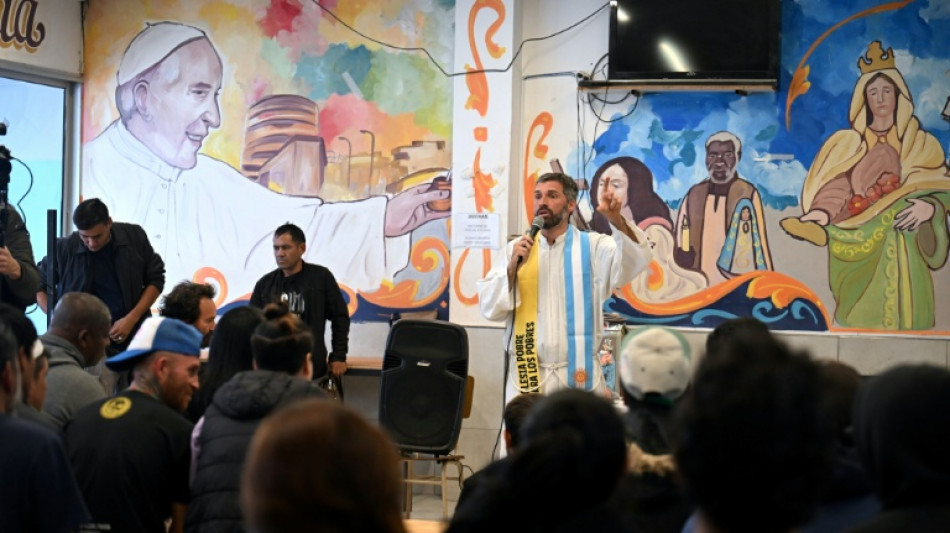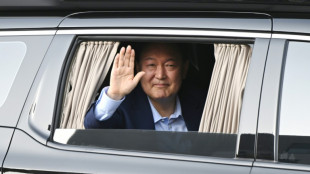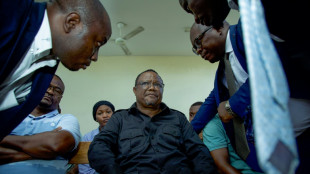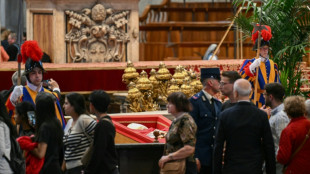
Argentina 'slum priests' take pope's message to the poor

Down a narrow street in Villa 31, the oldest of Buenos Aires's informal settlements, Father Ignacio "Nacho" Bagattini celebrates mass in a community center for homeless drug addicts.
The legacy of Pope Francis, who famously exhorted young Catholics to "shake things up" by taking the gospel to "favelas, slums and shantytowns," lives on in the ramshackle neighborhood of 40,000 souls, a stone's throw from the well-heeled district of Retiro.
Francis's call, issued at the 2013 World Youth Day in Rio de Janeiro shortly after he became pope, struck a deep chord among a group of Argentine clerics dubbed the "curas villeros" or "slum priests."
The group, which emerged in the late 1960s inspired by the Movement of Priests for the Third World -- a leftist organization that resisted Argentina's 1976-1983 dictatorship -- has traditionally kept its distance from the Catholic hierarchy.
That changed under Jorge Bergoglio, born in the poor Buenos Aires neighborhood of Flores, when he was the city's archbishop from 1998 to 2013 before becoming Pope Francis.
Bergoglio encouraged priests to get out and help the most needy.
"We know of the affection that Francis has always had for us," said Bagattini, who credits the pontiff with inculcating in the clergy the importance of "simple gestures like a hug, like sharing a meal."
The hall where Father Nacho celebrated mass is a far cry from the opulence of St Peter's Basilica where tens of thousands queued to see Francis lying in state ahead of his funeral Saturday.
The center looks onto a supermarket warehouse, next to a highway.
A plastic garden table covered with a stained tablecloth serves as an altar, topped with a nearly burned-out candle and a small statue of the Virgin Mary.
- 'We are not alone' -
After prayers, around 40 congregants, many of them homeless, fall into conversation over plates of rice with meat, with sides of bread and apples.
The center also offers hot showers, counseling, sports activities and job training for people living on the margins of society in a country perennially in crisis.
"If you offer people a life project... it helps to avoid them hanging around street corners where they will be inevitably confronted with drugs or weapons," Bagattini said.
As archbishop, Bergoglio often visited informal settlements, including the sprawling Villa 21-24 in the south of Buenos Aires, home to some 8,800 families.
Residents there fondly recalled him stopping by homes to share a mate -- the bitter herbal tea beloved by Argentines -- or to wash the feet of the homeless and young drug addicts.
Tamara Noga, a 29-year-old writer, said Bergoglio transformed her relationship with the Catholic Church.
"My faith was in the neighborhood, in knowing the 'slum priests,' in passing by the chapel, and needing to stay there because it is a place of silence, encounters, refuge."
While Francis never returned to Argentina after taking up the papacy -- a source of widespread regret in his homeland -- he has been immortalized on murals that adorn the walls of Buenos Aires's many storied slum "villas" and parish halls.
"The pope will continue shaking things up from up above," said Bagattini, who wore a stole inscribed with the message "poor church for the poor" -- a catchphrase of Bergoglio's -- while celebrating mass.
For Sebastian Curbelo, a 31-year-old in treatment to wean himself off coca paste -- the main ingredient in cocaine, "the message he (Francis) left is that it is possible to help people who have hit rock bottom, that we are not alone."
D.Brown--SFF

 London
London

 Manchester
Manchester
 Glasgow
Glasgow
 Dublin
Dublin
 Belfast
Belfast
 Washington
Washington
 Denver
Denver
 Atlanta
Atlanta
 Dallas
Dallas
 Houston Texas
Houston Texas
 New Orleans
New Orleans
 El Paso
El Paso
 Phoenix
Phoenix
 Los Angeles
Los Angeles



